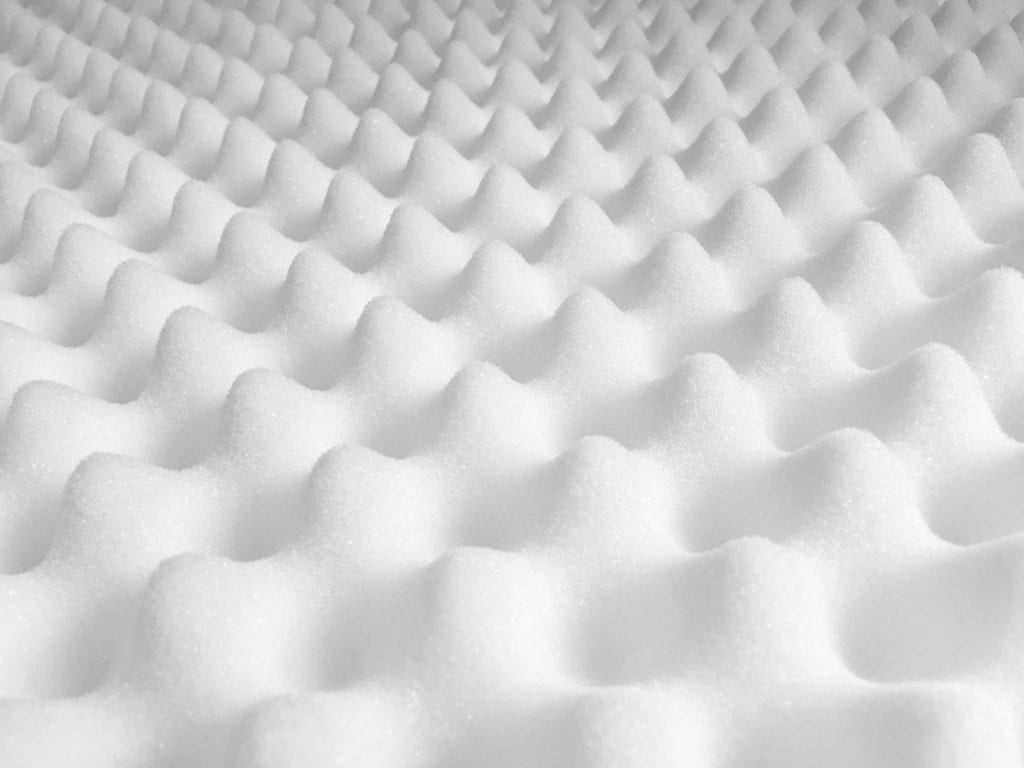Anyone who tosses and turns through the night and/or wakes up stiff with pain understands their mattress is the culprit, but most are unsure what to do.
With the right information you can make informed choices that will have you feeling better right away at a fraction of the cost of buying a new mattress.
Why does your back hurt in the morning?

It’s all about posture. Natural spinal posture is S-shaped but your body is pliable. During sleep your muscles relax and your spine conforms to whatever surface you’re sleeping on.
If your mattress is too firm your spine flattens because there isn’t enough conformability to maintain curvature. If your mattress is too soft or sags, your posture transforms from a healthy S-shape into an unhealthy C-shape.
Both problems cause back pain. In the morning you gingerly twist, bend and stretch until your muscles force realignment. This process takes time and it hurts.
How do you solve morning back pain?
There are two reasons why mattresses cause back pain and it’s important to understand which you’re experiencing to determine your best solution. The right topper can fix most failing mattresses.
- MATTRESS TOO FIRM – Adding a softening layer is needed to allow shoulders and hips to sink in just enough to prevent your posture from flattening.
- MATTRESS TOO SOFT – You need a topper that adds additional support and prevents your spine from sinking in and C-shaping.
How common mattress topper foams work.
Memory Foam – Often called visco foam, sometimes with added gel it’s marketed with a visible hand print indentation. Memory foam is slow recovery polyurethane foam produced from petroleum, it’s touted as motion absorbing and contouring. Body heat softens the foam so the longer you lay on memory foam the more you sink into it. Some like the sensation, some say it feels like being stuck in mud. Three inches or more of memory foam can initially provide relief for a mattress that’s too firm but it flattens quickly. Memory foam doesn’t have resistance to add support so it won’t help with a mattress that’s too soft and may in fact make the problem worse.

Egg Crate Foam – This is the most commonly purchased topper material because it’s the least expensive. Egg crate foam is standard polyurethane foam produced from petroleum. A single piece is cut in half with a special convoluting saw resulting in two pieces with peaks and valley’s. The peaks and valley’s create a soft feel that can help with pain from a firm bed but each piece is essentially half the material of a solid piece so it breaks down quickly, permanently flatting and requiring regular replacement. Egg crate foam doesn’t provide support so it won’t relieve pain from a mattress that’s too soft but it may help for a short period if your mattress it too firm.

Organic and Natural Latex Foam – Priced higher than polyurethane foams, organic and natural latex is harvested from rubber trees, it’s not a petroleum product produced from crude oil pumped from the ground like all polyurethane foams. Because organic and natural latex is rubber it stretches, maintaining positive resistance so you don’t simply sink through it. This unique ability pushes back and provides actual support in addition contouring pressure relief making organic and natural latex the only single foam that provides true support for your spinal posture.
Firmer latex holds you up preventing you from falling too deeply into a soft mattress. Softer latex maximizes contouring so you don’t flatten out on a mattress that’s too firm. Latex is the only single foam that works both ways.
What about synthetic or blended latex? Synthetic latex is a man-made “copy” of natural latex produced from petroleum chemicals. While it feels similar as natural latex it doesn’t have the rubber resiliency and resistance of natural latex.
Blended latex is a mixture of synthetic latex and natural latex. Most blended latex is approximately 80% synthetic and 20% natural. While it takes a baby step in the right direction it still doesn’t have the same characteristics of organic or all-natural latex foam.
Both latex versions are usually cost less than organic or 100% natural, but this is truly a “get what you pay for” situation. If price is your primary consideration then polyurethane offers a better price value than synthetic or blended latex options as all are petroleum based.
How thick should a mattress topper be to relieve back pain?
Usually mattress toppers are available in 1”, 2” or 3” options. Choosing the right thickness has a lot to do with the condition of your mattress.
1” – One inch may slightly change the feel of a mattress, but it just isn’t enough material to affect back pain. It won’t provide additional support to help a soft mattress and won’t add enough cushion to help you maintain S-shaped posture on a firm mattress.
2” – This is the minimum necessary to affect change and provide relief. Two inches works for newer mattresses that haven’t been worn out and when morning back pain is mild.
3” – Three inches is a game changer when the right topper is selected. It totally transforms a newer mattress and can add additional life to a mattress that’s seen better days. Best for older mattresses or moderate to severe morning back pain.
Other things to consider.
While we’ve addressed mattress related morning back pain, causes and solutions, there are also other factors to consider when shopping for a mattress topper:
- How healthy are the foam materials?
- Does the topper include a protective cover?
- Is there a trial period and return option?
- What is the warranty?
Armed with a little knowledge you can certainly ease morning back pain from an uncooperative mattress without breaking the bank.


